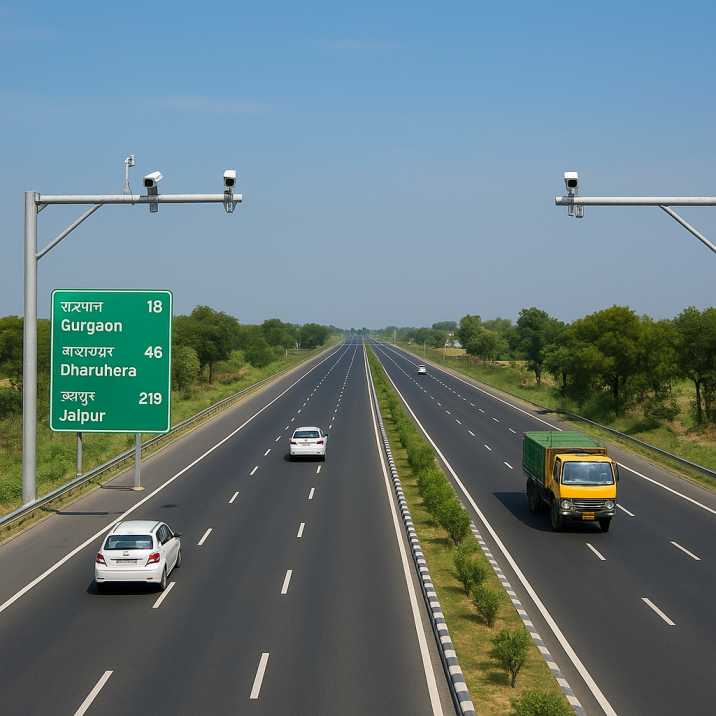Contact Us
RoadVision AI
Private Limited
Office No. 308 & 310, B Block
Ansal Chamber - 1, Bhikaji Cama Place,
Near Engineers India Limited (EIL) Bhawan, New Delhi - 110066
© 2024 | RoadVision AI | All rights reserved
The Indian Roads Congress (IRC), through its various codes such as IRC 64, provides essential guidelines for traffic projections and road design standards that shape India’s transport infrastructure. IRC 64 specifically addresses the methodology for estimating future traffic volumes, which form the foundation for the design and capacity planning of highways, expressways, and urban corridors.
As India experiences rapid urbanization and increasing vehicle ownership, accurate traffic projection has become a critical factor in ensuring long-lasting, safe, and efficient road infrastructure. However, traditional manual methods of counting and forecasting are being rapidly replaced by AI-based traffic survey systems and automated road asset management tools that bring data-driven precision into decision-making.

Traffic projections are not mere estimates—they determine the lane configuration, pavement thickness, safety features, and maintenance cycles of a roadway. According to IRC 64, the process involves:
This framework ensures that road infrastructure remains serviceable and safe throughout its intended life. The accuracy of these projections directly influences not only pavement performance but also budget optimization and long-term maintenance planning.
Traditionally, traffic surveys relied on manual counting methods, pneumatic tubes, or short-duration observational studies. While these offered basic traffic estimates, they were often:
These limitations lead to poor forecasting, ultimately resulting in premature road deterioration, overdesign, or underutilization.
The evolution of AI-powered traffic survey tools has transformed how road authorities gather and analyze data. Advanced solutions such as computer vision and machine learning models enable automated monitoring across extensive road networks.
With technologies like AI-based traffic survey systems, engineers can:
These digital systems support the IRC 64 methodology by offering high-frequency, high-fidelity data that feeds into reliable traffic growth models.
Automated road asset management is another crucial component in modern roadway design and maintenance. By merging pavement condition data, traffic loads, and environmental variables, it enables authorities to make data-backed decisions for asset sustainability.
Systems such as AI-powered pavement condition surveys and road inventory inspections help monitor the physical and functional health of road networks. When integrated with traffic projection data, these systems allow planners to:
Such integration represents a shift from reactive to predictive road management, aligning perfectly with the principles outlined in IRC 64 for long-term road design.
The deployment of digital traffic monitoring systems enables continuous, real-time insight into traffic patterns and network performance. Unlike periodic manual surveys, these systems operate 24/7, using AI video analytics, edge computing, and automated alerts to inform authorities of congestion, safety risks, and maintenance needs.
This constant data feedback helps optimize:
By coupling real-time monitoring with AI-driven road safety audits, India’s road infrastructure can evolve to meet future demands with enhanced efficiency and safety.
AI-based predictive models bring a revolutionary layer to traffic projection. By analyzing historical data, real-time sensor input, and regional development trends, automated traffic analysis tools can accurately simulate future demand scenarios. This allows engineers to:
The synergy between IRC 64 methodologies and AI-powered forecasting tools ensures that roads are not only built for today but are designed intelligently for tomorrow.
The future of India’s road design lies at the intersection of data-driven intelligence and regulatory precision. By aligning the principles of IRC 64 with AI-based traffic survey systems, digital traffic monitoring, and automated road asset management, India can achieve infrastructure that is predictive, sustainable, and future-ready.
RoadVision AI is revolutionizing road infrastructure development and maintenance with its innovative solutions powered by computer vision AI. By leveraging advanced technologies, the platform conducts comprehensive road condition monitoring and traffic surveys, enabling early detection of surface issues like potholes and cracks for timely repairs and enhanced roads. Through traffic congestion analysis, RoadVision AI provides data-driven insights to address traffic congestion challenges and optimize road usage. With a focus on building smarter and more efficient road infrastructure, RoadVision AI ensures full compliance with IRC Codes, helping engineers and stakeholders reduce costs, minimize risks, and improve road safety and transportation efficiency.
For road authorities, urban planners, and engineers, adopting these technologies is no longer optional—it’s essential for building resilient and intelligent road networks that meet the demands of a growing nation.
Book a demo with us to experience how RoadVision AI’s solutions can transform your traffic management and road planning strategies.
1. What is IRC 64 and why is it important?
IRC 64 provides standardized methods for traffic projection and road design in India, ensuring that roads are built to handle future traffic growth efficiently.
2. How do AI-based traffic surveys improve upon traditional methods?
AI tools provide continuous, automated data collection with higher accuracy and classification capabilities, replacing error-prone manual surveys.
3. What role does automated road asset management play in sustainable infrastructure?
It integrates traffic, condition, and maintenance data to predict wear, optimize resources, and extend pavement lifespan, ensuring better ROI and road safety.